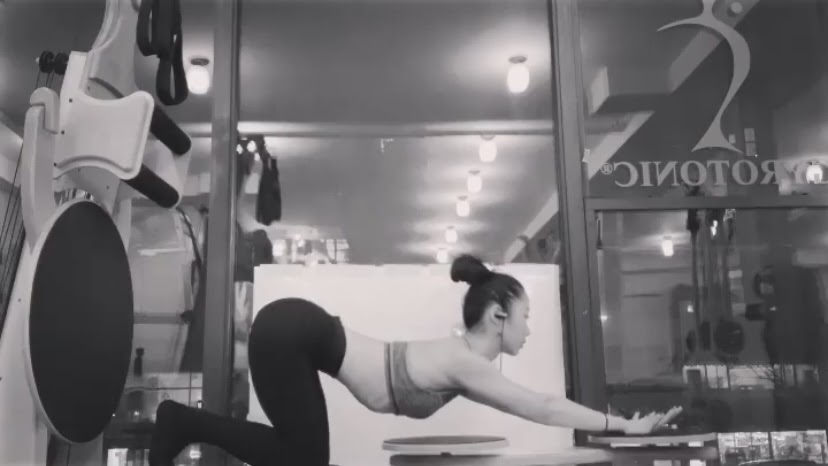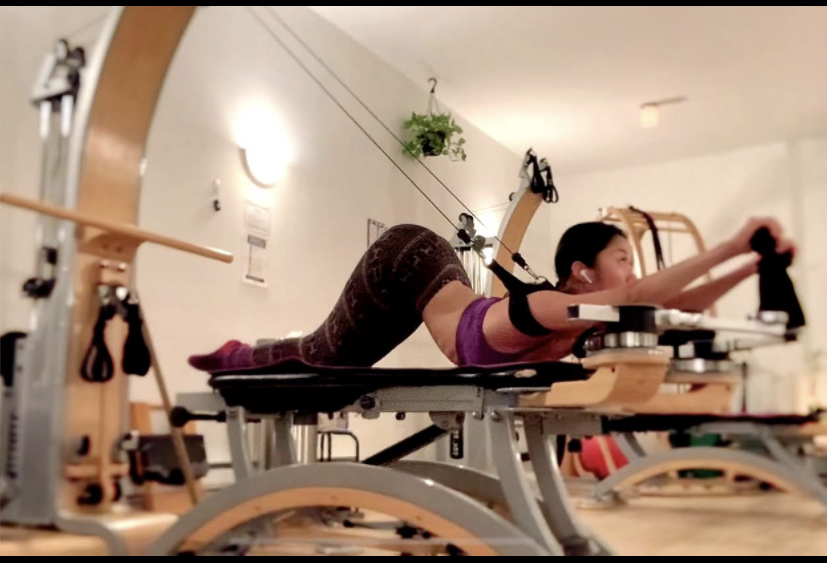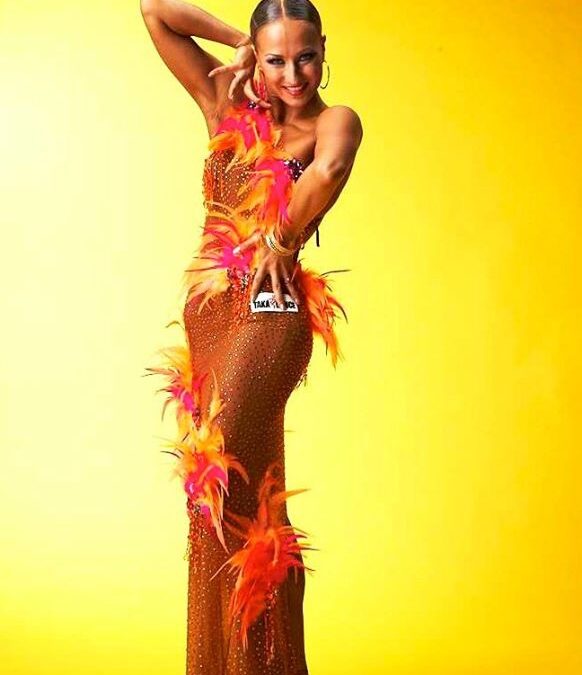In 2017, professional ballroom dancer Phoenix Linsong broke her toe, which took her off the dance floor for three months. This was only one of several injuries Phoenix sustained throughout her dance career. She had tried it all– physical therapy, chiropractors, yoga, pilates– but still, the injuries persisted.
In her search for a way to stay active while recovering, Phoenix discovered the GYROTONICⓇ Method, a movement system that integrates elements of yoga, dance, tai chi and gymnastics to open energy pathways, stimulate the nervous system, and increase flexibility, strength and agility. Through Gyrotonic, Phoenix not only was able to uncover the root of her chronic injuries, but also find a way to heal herself. She is now a certified Gyrotonic and GYROKINESISⓇ. In this article, she shares with us the value of Gyrotonic, particularly as it applies to ballroom dancers.
Q: What is Gyrotonic and Gyrokinesis?
A: The Gyrotonic and Gyrokinesis Methods are complementary exercise methods that fall under one umbrella– the Gyrotonic Expansion System. Gyrotonic exercises are performed on custom-designed Gyrotonic equipment, whereas Gyrokinesis exercises are performed on a mat and chair. In Gyrotonic, the main equipment is the Pulley Tower. Then there are four specialized equipments, the Jumping-Stretching Board, the Leg Extension Unit, the Archway, and the GYROTONERⓇ. These machines are designed to guide, support, and challenge the exerciser. Gyrotonic is catered to people from all walks of life, including fitness enthusiasts, senior citizens, competitive athletes, and people recovering from an injury or dealing with a disability. Gyrotonic exercises help athletes improve their performance, and rehabilitate clients to recover more quickly and fully post injury. The Gyrotonic Method is practiced in group or private settings under the instruction of a qualified certified Gyrotonic Trainer.
Q: How does Gyrotonic differ from other movement systems, like yoga and pilates?
A: The first key principle of Gyrotonic is its emphasis on breathing. For every movement, there is a coordinated breathing pattern. What distinguishes Gyrotonic from other movement methods is how scientific and technical the system is. There are many body mechanics principles, including the narrowing of the pelvis and decompression of the spine. Whereas yoga and pilates are two-dimensional and linear, Gyrotonic promotes multi-dimensional and circular movement patterns. The way the machines are designed is very intelligent. They are composed of spiraling, circular movement, which flow together seamlessly in rhythmic repetition with corresponding breathing patterns. Each movement flows into the next, allowing the joints to move through a natural range of motion without jarring or compression. These carefully crafted sequences create balance, agility, strength and flexibility.
A subcategory of Gyrotonic is Gyrokinesis, formerly called “yoga for dancers”, which is a movement system rooted in the same principles as Gyrotonic, except without the use of specialized equipment. Gyrokinesis is performed on a mat and chair, and participants engage in body weight exercises that focus on twisting action, breathing, and circular movement.
Q: How did Gyrotonic help you personally?
A: Gyrotonic really was the turning point for me in terms of understanding my body and why I was constantly getting injured. I finally understood why at age 14, I always had back pain after standing for too long. Beyond learning about body mechanics, I found a wonderful community in Gyrotonic. You could almost say I was “spiritually awakened”. Gyrotonic is not only about physical movement. I love the philosophy behind it, which emphasizes the connection between mind, body and spirit, and how the three are all-encompassing and related to one another. You are taught to understand your body, but also to be in touch with your inner self and understand your strengths and areas you need to improve on. Through Gyrotonic, I finally found something that worked for my body, and even without formal scientific training about physiology, I can use Gyrotonic principles to experiment with different ways to heal myself. Gyrotonic has allowed me to bounce back from injuries very quickly, so I could get back onto the dance floor and do what I love!

Q: Why is Gyrotonic great for ballroom dancers?
A: Just like you can’t fight your dance partner, you also can’t fight the machine. You need to learn when to let the machine’s weight assist you, and when to put in some effort on your own part. The practice of Gyrotonic teaches your body to move from a place of harmony and balance. Movements are slow and not forced. Oftentimes, competitive athletes and dancers are trained to force movements in a very intense and manufactured way. However, you will find that many Gyrotonic movements have animal names, like dolphin, donkey kick, crazy shrimp. In nature, all organisms move so organically. There is always an order, never chaos. This core philosophy applies not only to body movement, but also to mental and spiritual realms. This is why Gyrotonic can be transformative — it recognizes the union of body and soul, seeing the two not as distinct entities, but [one in the same thing].

People may not know this, but many of the top ballroom couples in the world– Riccardo and Yulia, Bryan and Carmen, Slavik and Karina– were doing Gyrotonic while they were competing!
To understand why Gyrotonic is so great for dancers, think of the following analogy: if someone plays the guitar, they wouldn’t go into a guitar lesson and have the teacher tell them how to tune their guitar. You have your guitar tuned already, and then go into the class to learn how to play music. As a dancer, our body is our instrument. When we go to a dance lesson, we want to learn about dance technique, choreography, and performances. Outside of dance class, we need to educate ourselves on the names of our hip bones or the importance of psoas. Sometimes I’d throw away $200 on a dance lesson, and not know how to do a rumba walk better. It’s important for dancers to invest in learning about body mechanics on their own, because once you have the knowledge about your body, you can go into dance class and spend that time actually learning how to dance. Gyrotonic trains your body’s coordination, strength and flexibility, and also gives you a deeper understanding of how your body operates. So when you go into a dance lesson, you will get so much more out of it since both your body and mind will be ready to absorb information.

To learn more about Gyrotonic and Phoenix, check out her feature article and Instagram page.



0 Comments